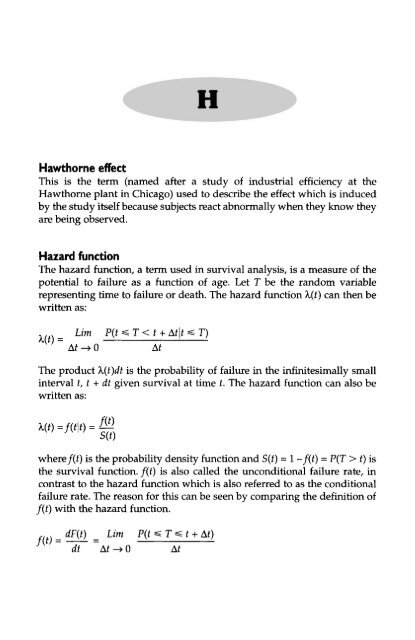Dictionary of Evidence-based Medicine.pdf
Dictionary of Evidence-based Medicine.pdf
Dictionary of Evidence-based Medicine.pdf
You also want an ePaper? Increase the reach of your titles
YUMPU automatically turns print PDFs into web optimized ePapers that Google loves.
H<br />
Hawthorne effect<br />
This is the term (named after a study <strong>of</strong> industrial efficiency at the<br />
Hawthorne plant in Chicago) used to describe the effect which is induced<br />
by the study itself because subjects react abnormally when they know they<br />
are being observed.<br />
Hazard function<br />
The hazard function, a term used in survival analysis, is a measure <strong>of</strong> the<br />
potential to failure as a function <strong>of</strong> age. Let T be the random variable<br />
representing time to failure or death. The hazard function A,(f ) can then be<br />
written as:<br />
The product k(t)dt is the probability <strong>of</strong> failure in the infinitesimally small<br />
interval t, t + dt given survival at time t. The hazard function can also be<br />
written as:<br />
where /(i) is the probability density function and S(t) = 1 -f(t) = P(T > t) is<br />
the survival function. f(t) is also called the unconditional failure rate, in<br />
contrast to the hazard function which is also referred to as the conditional<br />
failure rate. The reason for this can be seen by comparing the definition <strong>of</strong><br />
f(t) with the hazard function.










